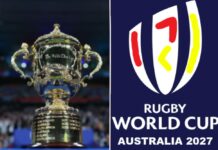SANZAR is planning to introduce a cricket-style decision review system into Super Rugby and the Rugby Championship in 2016.
Like the rest of the rugby world, SANZAR is locked into the refereeing protocols that will carry through to next year’s World Cup in England. Once that tournament has been played it will be looking to bring in a review system which will help to reduce the number of refereeing howlers that are deciding the outcomes of games, Test matches included.
Irish referee George Clancy’s bewildering decision to give Springboks winger Bryan Habana a yellow card for a high tackle in the 66th minute of Saturday’s Test in Perth has come under fire on both sides of the Indian Ocean and has been seen as contributing to Australia’s dramatic come-from-behind victory.
That said, Clancy was also the referee in charge at Twickenham last year who failed to overrule the diabolical decision by the touch judge to rule that Quade Cooper’s penalty kick into the corner just after half-time did not go into touch, even though replays clearly showed the England player who caught the ball put his foot on the sideline.
Instead of the Wallabies throwing into an attacking lineout 5m from the tryline, England counter-attacked and scored at the other end. In the context of a 13-20 defeat, it was a pivotal non-decision.
Argentina also were treated cruelly by French referee Pascal Gauzere in their Rugby Championship match against the All Blacks on Saturday when he wrongly disallowed a try to Leonardo Senatore after the Argentinian lock charged down a Ma’a Nonu kick, regathered and scored.
It’s precisely those sorts of bloopers that SANZAR is hoping to take out of the game in 2016 when it introduces a system that will allow each team to challenge decisions they believe the referee has got wrong.
The details are still being worked through but the starting point is that, as in cricket, each team will be allowed a minimum of three challenges but not lose a referral whenever they make a successful review.
Sources have told The Australian that SANZAR still is undecided whether to allow the captain or the coach to make the referral. The preference is for the captain to handle that responsibility but rugby is a different game entirely from cricket where the fielding captain has a clear view of any incident that might give rise to a challenge.
In rugby, however, the captain of the side on the wrong end of a decision might have had his head buried in a ruck 30m downfield.
But the problem with allowing coaches to make the call is that invariably they — or their technical assistants — will have instant access to their own replays and in a matter of seconds would be able to review any contentious incident and make a snap assessment of whether a challenge might be successful.
Under the new DRS system, referees would be required to make a ruling on every try or suspected foul-play incident at which point any side which felt harshly done by would have to decide whether to roll the dice and place one of their referrals at risk.
The concern at present is that referees are hiding behind the television match official, and are referring to him even straightforward calls for fear of being seen to make a mistake.
Wallabies coach Ewen McKenzie cautiously welcomed the news of the SANZAR initiative.
“The only thing I’m mindful of is how much dead time there is in a game,” McKenzie said.
“If you challenge the call and get it right you can challenge again and theoretically you could have 20 challenges.
“People want to be entertained, they want to be kept entertained, they don’t want to be sitting there watching replays. I don’t know the solution but it is interesting they at least are having the conversation.”





















